Today we went to Birmingham, Alabama.
First we went to the 16th Street Baptist Church. I learned that the church was bombed by members of the KKK in 1963. The bomb killed four innocent little girls who were part of the Sunday School Youth Program. The fifth girl, Sarah, was very badly injured but was not killed. She lost her sister and has to have the memory of that day forever.
Our tour guide was really nice, and he was a member of the church back then and also now. He showed us two films, then he showed us where the church was bombed. He also told us about the history of Birmingham. It was actually a steel mill and coal mining town, and it became very wealthy, with successful. The church was founded in 1873—but that’s not the church that was bombed. The first church was also beautiful and large, but white people in Birmingham didn’t want Black people to have a big, nice church so they made them tear it down. They condemned it, even though there was nothing wrong with it. The church members rebuilt the new church where it stands today in 1911. Most of us on the tour did not know that.
We also learned about the stained glass that was shattered by the bomb. The church members had an artist from Wales repair the image of Jesus. He was so moved by the people and the story of the 16th Street Church that he made another stained glass window that shows a Black Jesus, and he gave it to the church. You can see it high up in the sanctuary, and our guide told us it’s one of the most popular sites on the tour.
Next we went to the Birmingham Civil Rights Institute. This was a really big museum, and it took a long time to explore. It showed you examples, like a white classroom with nice tiled floors, a projector, books, nice desks. The Black classroom had gray walls, and things were falling apart. No projector. They just had chairs, no desks, no supplies.
In the white classroom there were pictures of white people, like George Washington. In the Black classroom there were pictures of Frederick Douglass and Abraham Lincoln.
There were also old fashioned TVs, films and recordings of speeches, and a jukebox that played old music.
One of the things that all of the museums we’ve visited emphasized is that kids were really important. They saw the injustice, and they wanted to help their parents. They also wanted to have a better life for themselves. When they marched, people paid attention because they were just children, and they were marching and singing for freedom and they still got beaten and battered by police. People saw that that was wrong. And they came to help.
P.S. Now I have this song stuck in my head. It’s a good song, though!
Tomorrow we’re touring Montgomery, then coming home to see Daddy and Harriet. It’s been a great trip!

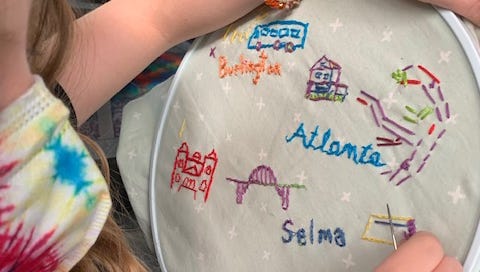



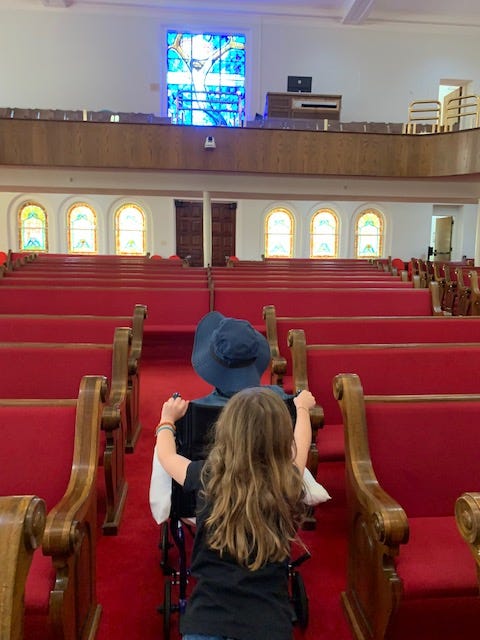
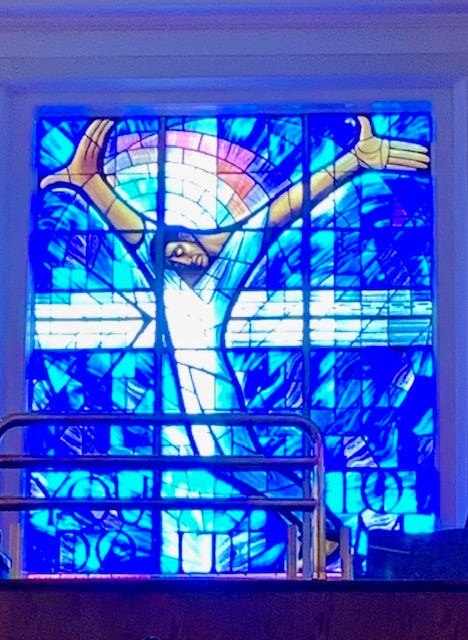
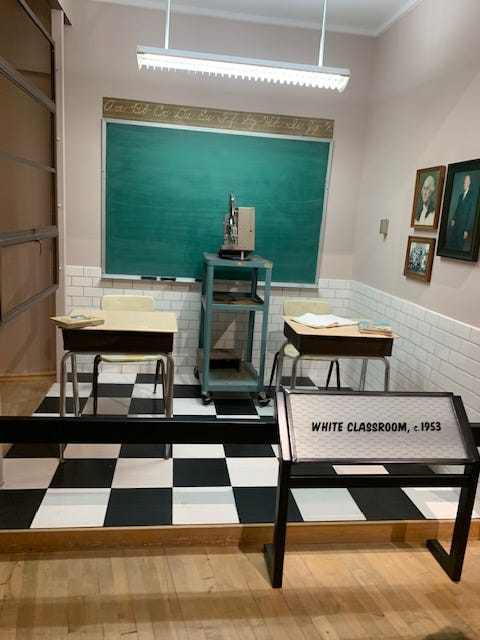
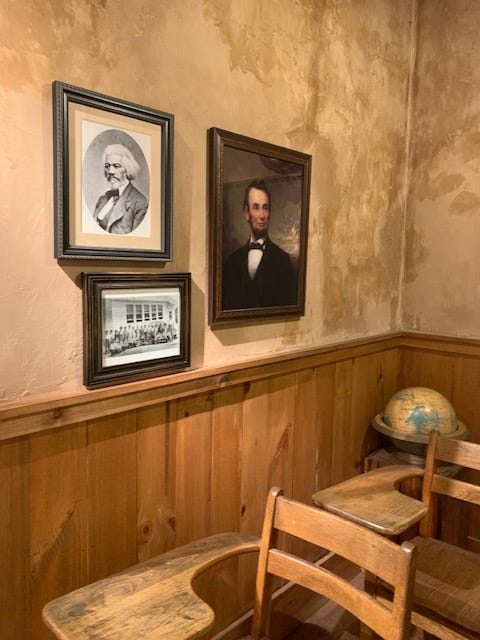
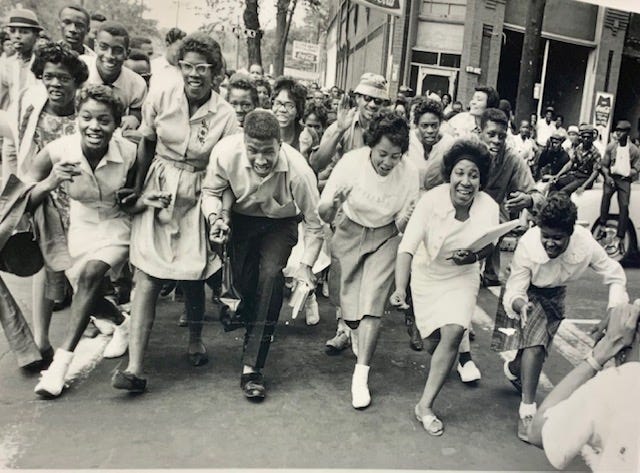
I feel like I was with you. Your post was very well-written, and informative. I get that song stuck in my head sometimes, too, but I love it’s power and emotion. It touches your soul. My love to all.
What a beautiful, moving post, Bea. Thank you for this. I learned so much and love seeing that stained glass window. And your embroidery! ❤️